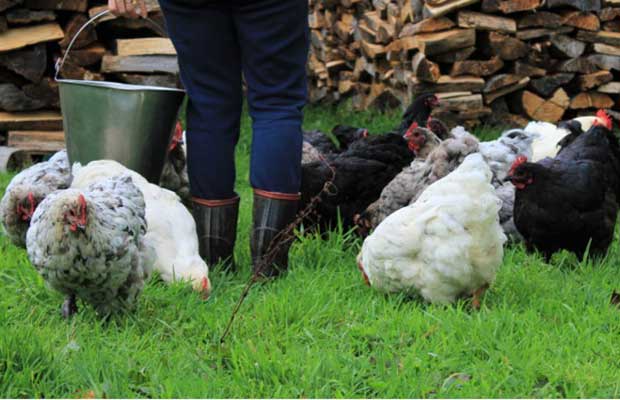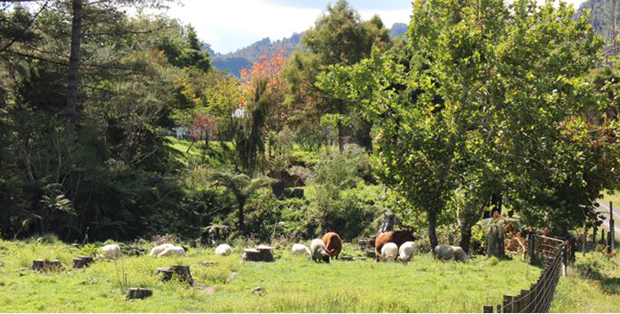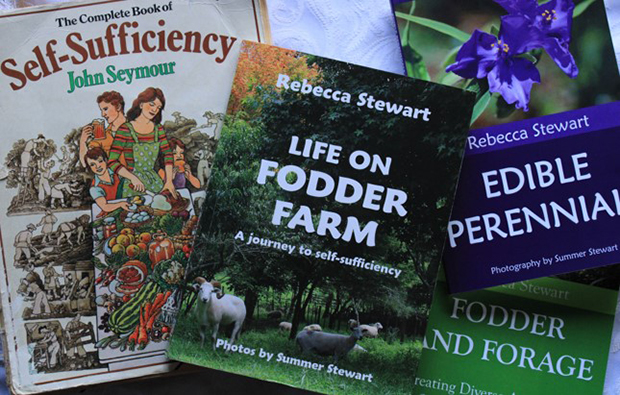
Rebecca Stewart: The Good Life

Words: Rebecca Stewart Images: Summer Stewart
Rebecca reflects on the joys of her homestead life and learnings.
I wonder how many of us homesteaders grew up watching Barbara and Tom of The Good Life on the telly. Their backyard was a thriving chaos of food gardens, chooks and, I believe, a milking goat. The sitcom first aired in 1975 exactly one month before I was born. In 1976 John Seymour published The Complete Book of Self-Sufficiency and today a tattered and torn copy of it resides on our bookshelf. It was a gift from my Nana as it was one of my favourite books to browse when visiting her house as a child.
On our arrival here three years ago, a new neighbour asked what brought us to the valley. When we replied that we wanted to live off our land, he said: ‘Ah living the good life’. It shows our age I guess that we all know this term.

Now I see a new wave of homesteaders, many inspired by American Homesteaders on You Tube, some trying to reduce food miles and carbon footprints, and others simply trying to survive as best they can in a world of skyrocketing costs. Many wish to connect with like-minded people yet within the online homesteading communities the diversity in people and opinions is huge. Within our own community we don’t really know many people who live or think like us.
Some believe homesteading, living the good life and practising self-sufficiency is about gardening, preserving and perhaps raising livestock.
But it is so much more than that. It is about choosing a simpler, cleaner lifestyle, reminiscent of a time long-gone when what you produced yourself directly impacted on the quality of your life. We aim to produce all we can from our land and by our endeavours. This includes at the very least food, healthcare and homecare. For many it goes much further into livestock care and the provision of water, power, fuelwoods and timber, clothing and footwear. We learn how to build and fix things or how to get by with what we have. We take responsibility for our lives, our health, our land, and all that is on it.
One aspect that can be overlooked is the need for money. No matter how far we travel along this self-sufficiency road, there are always expenses such as rates or rent, internet or phone bills, fuel and vehicle costs. Each person’s needs will be different but unless living at a subsistence level of life is acceptable, income (or savings) is required.
Barbara and Tom reduced the need for money by bartering and swapping for what they could not produce. John Seymour wrote books teaching self-sufficiency to earn an income. A home-based income is an integral part of many people’s homesteading journey. It allows the freedom and flexibility to respond to the day-to-day needs of the homestead in appropriate weather, for example, instead of being committed to a schedule of the outside world.

For many of us, especially those with rural backgrounds, this was how our grandparents lived, perhaps even our parents. For those who remember these simpler times, it might not be such an obstacle to return to such a life. However, those who have not experienced an existence other than that of a modern consumer, in a debt-driven and highly ‘connected’ world, may have a harder journey.
Many people ask us: ‘How do we start our homesteading journey?’ Our answer is to make one change at a time, learn all you can and simplify your life.
In our book Life on Fodder Farm we share our journey, what we have learned about simplifying our lives and how even city-based people can begin their own journey.
Life on Fodder Farm by Rebecca Stewart, available in bookstores from August. $39.99

